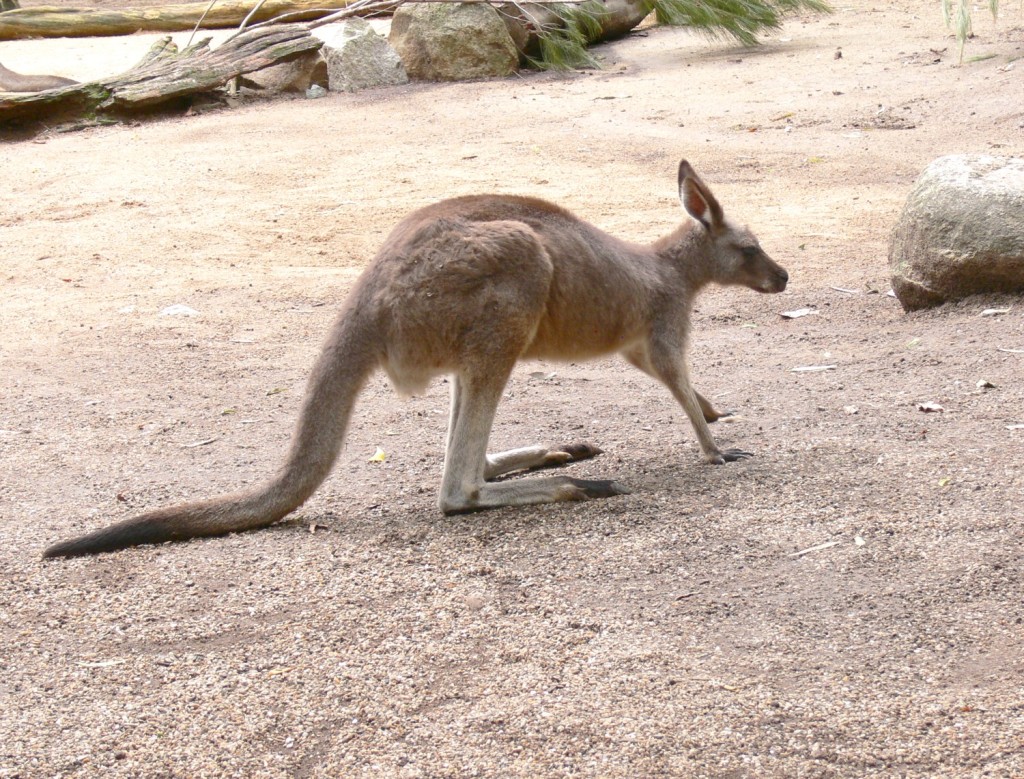Any person could attribute a kangaroo to Australia.
- Kangaroos are marsupials that are very symbolic of Australia, their native home, and the animal even features in the country’s coat-of-arms.
- Macropodidae is the family of kangaroos, while the scientific name of the animal is Macropus, however, the smaller animals in the genus are called ‘wallabies’, and some are known as ‘wallaroos’.
- There are four species in the Macropus genus called ‘kangaroos’ – the ‘Red’ (Macropus rufus); ‘Western Grey’ (Macropus fuliginosus); ‘Eastern Grey’ (Macropus giganteus); and the lesser known ‘Antilopine’ (Macropus antilopinus) which is sometimes called a ‘wallaby’ or a ‘wallaroo’; while the ‘tree kangaroo’ belongs to a different genus.
- The diet of kangaroos consists of a variety of vegetation including grasses, flowers, fungi, seeds and shrubs, which is often chewed multiple times as cud; and they have fur that ranges from brown, tan, red or grey in colour, which varies according to the species, and the common names of the various species is generally indicative of the colour of their fur.
- Kangaroos range in height from 0.8 to 2.1 metres (2.6 to 6.9 feet) in height and have a weight that ranges from 18 to 90 kilograms (40 to 200 pounds), while those in the ‘red’ (rufus) species are the largest extant marsupials.
Kangaroo
Image courtesy of Val Laird
- Kangaroos are notable for having feet and a tail of significantly large size, which are useful for keeping the animal stable, especially when they move, and they can jump distances that can reach 8 metres (24 feet) in length and 2 metres (6.6 feet) in height, and can move at speeds up to 60 kilometres per hour (37 miles per hour).
- Kangaroos may fight for dominance or simply for entertainment, fighting somewhat like a boxer or kicking with their potentially dangerous feet, and they will use these movements as defence against predators like dingoes.
- The young of a kangaroo, known as a ‘joey’, spends around two thirds of a year in the pouch of its mother, where it grows as a neonate, poking its head out after about six months.
- Kangaroos are mostly nocturnal and as a result, are particularly susceptible to being startled by vehicle noises and headlights, and they often jump in front of vehicles in confusion, which can be fatal for the animal and sometimes the occupants of the vehicle.
- The meat of kangaroos has traditionally been eaten by indigenous Australians, and it is becoming quite popular among others, especially for its high protein and low fat properties.
Bibliography:
Kangaroo, 2015, Wikipedia, https://en.wikipedia.org/wiki/Kangaroo
Kangaroo, 2015, A-Z Animals, http://a-z-animals.com/animals/kangaroo/
Kangaroo Facts, 2015, Outback Australia Travel Guide, http://www.outback-australia-travel-secrets.com/kangaroo-facts.html







